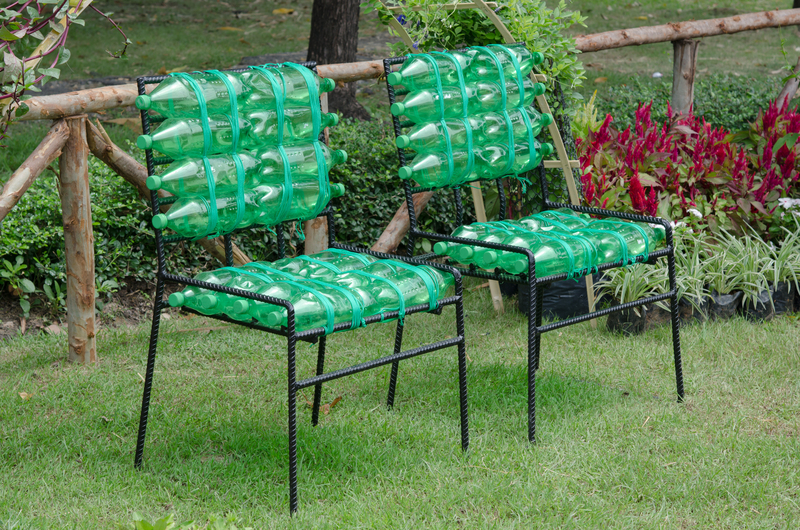Recycle and Refresh: Eco-Conscious Ways to Recycle Old Clothes
Are you staring at a wardrobe packed with clothes you never wear? Instead of discarding those old garments, why not give them new life and purpose? Embracing sustainable methods to recycle old clothes is an excellent way to minimize textile waste, conserve resources, and make a positive impact on the environment. This comprehensive guide explores innovative and eco-friendly ways to recycle, upcycle, and refresh your unwanted clothing.
Why Is Recycling Old Clothes So Important?
The fashion industry is one of the largest contributors to global pollution, producing millions of tons of textile waste each year. When you choose eco-conscious methods to recycle clothes, you help to:
- Reduce landfill waste: Textiles that end up in landfills take decades to decompose and release harmful chemicals into the soil.
- Save resources: Producing new clothing consumes vast amounts of water, energy, and raw materials.
- Lower carbon footprint: Recycling garments reduces the demand for new production, cutting greenhouse gas emissions.
- Support the circular economy: Reusing and recycling textiles keeps materials in use for as long as possible.
With countless ways to creatively refresh your wardrobe, you can declutter sustainably while expressing your personal style.

How to Recycle Clothes: The Most Effective and Eco-Friendly Methods
Before tossing an item, ask yourself: can it be worn again, reworked, or repurposed? Here's an eco-conscious guide to recycling old clothes in creative, environmentally responsible ways.
1. Donate Gently Used Clothing to Charities and Local Organizations
If your old clothes are still in wearable condition, donation is a powerful way to give them new life. Consider:
- Charity shops: Donate to nonprofits like Goodwill, Salvation Army, or local thrift stores.
- Homeless shelters and women's refuges: Organizations serving people in need often welcome clothing donations, especially for essentials like coats, shoes, and business attire.
- Clothing drives: Schools and communities frequently run collection campaigns for families in need.
Tip: Always wash clothes and check for damage before donating.
2. Host a Clothing Swap
Clothing swaps are fun, social, and sustainable! Invite friends, coworkers, or community members to bring quality items they no longer wear. Everyone goes home with something new-to-them, and perfectly good clothes get a new home.
3. Sell or Consign Your Unwanted Clothes
If your garments are in excellent condition or brand-name, why not earn some extra cash? Eco-conscious fashion lovers can:
- Sell on digital marketplaces like Depop, Poshmark, or eBay.
- Consign through local boutiques or upscale thrift shops.
- Join a clothing resale app dedicated to sustainable fashion.
This not only recirculates clothing but supports a culture of reuse over fast fashion.
Eco-Conscious Ways to Refresh and Upcycle Old Clothes
If your clothes are not fit for a second home--but you're not ready to say goodbye--try creative upcycling projects to transform them into something useful or stylish. Here are some inspiring ideas:
1. Turn Worn-Out T-Shirts into Cleaning Rags or Tote Bags
- Cut t-shirts into squares for reusable and absorbent cleaning cloths. These are ideal for dusting, washing, and general household use.
- With simple stitching, turn old tees into market totes or reusable grocery bags (there are countless easy tutorials online!).
2. Patch or Repurpose Your Denim
Jeans and denim jackets are durable and versatile! Try:
- Patching holes with decorative fabric, embroidery, or visible mending techniques.
- Cutting old jeans into shorts, skirts, or funky patchwork projects.
- Using denim scraps to make coasters, potholders, or even quilt squares.
3. Get Crafty With DIY Home Decor
Transform old skirts, shirts, and sweaters into:
- Pillow covers or cushion stuffing.
- Colorful patchwork quilts or picnic blankets.
- Unique wall art, fabric garlands, or braided rugs.
Not only are these projects good for the planet, but they inject personality into your space!
4. Refresh Clothes With Dye or Fabric Paint
Stains, fading, or out-of-date colors don't have to mean the end for your clothes!
- Use natural or eco-friendly fabric dyes to give faded shirts and dresses a new hue.
- Personalize jackets, canvas shoes, or bags with hand-painted designs.
- Add iron-on patches, embroidery, or appliques for a modern, custom look.
5. Transform Old Clothing into Accessories
- Make scrunchies, headbands, or fabric belts from leftover material.
- Craft fun jewelry--like braided bracelets or fabric earrings--from fabric strips.
- Turn worn sweaters into cozy mittens or hats.
The possibilities are endless when it comes to upcycling old clothes for new uses!
What About Clothes Too Damaged to Wear or Repair?
Textile Recycling Programs: Where and How to Recycle Old Clothes Responsibly
Even the most beloved clothes eventually become too worn for re-use. Luckily, many textile recycling solutions are available worldwide:
- Retailer take-back schemes: Many brands (like H&M, Levi's, and Patagonia) collect old clothes in-store to recycle them into new fibers or products. Check specific guidelines for types of accepted textiles.
- Municipal recycling bins: Some cities have designated clothing recycling bins or depots. Research your local council to find out if textile recycling is available in your community.
- Specialized textile recyclers: Organizations like TerraCycle, SMART, and local fabric recycling centers process worn textiles into new materials--such as insulation, industrial rags, or even new threads.
Ensure items are clean and dry before recycling. Avoid putting moldy, wet, or heavily soiled fabrics into bins, as these can contaminate the recycling process.
Which Clothes Should NOT Go In Textile Recycling?
Textile recyclers usually do not accept:
- Clothes with oil, paint, or hazardous chemical stains.
- Extremely moldy or wet textiles, which can damage equipment or contaminate batches.
- Clothes made with mixed fibers that can't be separated (though this technology is improving!).
Eco-Conscious Clothing Brands That Make Recycling Easy
Numerous sustainable brands make it easier than ever to recycle or upcycle old garments. Look for companies that:
- Offer take-back programs or repair services.
- Use recycled materials in new collections.
- Maintain a transparent supply chain and prioritize responsible manufacturing.
By supporting these brands, you help close the loop on fashion waste and encourage more companies to adopt greener practices.
Creative Ways to Refresh Your Wardrobe Sustainably
Recycling old clothes isn't just about sustainability--it's an opportunity for self-expression and creativity. Try these ideas to keep your wardrobe fresh while reducing your impact:
- Practice a capsule wardrobe: Curate a collection of versatile classics and high-quality staples, reducing the need for constant shopping.
- Host regular closet audits: Revisit your wardrobe each season. Restyle forgotten pieces or swap them with friends.
- Rent or borrow: For special occasions, consider renting outfits instead of buying new.
- Follow slow fashion principles: Buy less, choose well, and make it last!
Get Inspired: Famous Examples of Upcycled Fashion
The rise of upcycled and recycled clothing on runways and in streetwear proves you don't have to sacrifice style for sustainability. Designers and brands have:
- Turned discarded fabrics into couture gowns and avant-garde jackets.
- Created must-have bags and shoes from old denim, leather, and sportswear.
- Launched mainstream collections made entirely of post-consumer recycled fibers.
When you upcycle or refresh your old clothes at home, you become part of this global fashion revolution.
Tips for a More Eco-Friendly Wardrobe
Maintaining a sustainable closet goes beyond learning how to recycle old clothes. Here's how to build greener habits:
- Shop mindfully: Buy only what you need and focus on longevity over trend-driven purchases.
- Choose natural fibers: Opt for cotton, linen, hemp, and wool where possible, as these break down more easily than synthetics.
- Learn basic clothing repair: Master simple fixes like sewing buttons, patching holes, or hemming jeans.
- Support secondhand, vintage, and sustainable brands.
- Care for clothing properly: Wash in cold water, avoid over-washing, and air dry when you can.

Frequently Asked Questions on Recycling Old Clothes
Can I recycle old underwear or socks?
Typically, undergarments and socks are not suitable for donation, but many textile recycling programs will accept clean items--even those that are worn or have holes. Always check the specific requirements of your local recycler.
Can I recycle shoes?
Yes! Some programs and retailers (like Nike's Reuse-A-Shoe) turn old athletic shoes into playground surfaces or new footwear. Donate wearable shoes to charities or pass them on via local "give and take" groups.
What happens to recycled textiles?
Depending on the facility, recycled fabrics can be shredded and turned into:
- New yarn for textiles and garments
- Industrial rags and cleaning materials
- Insulation or soundproofing for buildings
- Upcycled fashion items (such as bags, hats, or furniture coverings)
Conclusion: Refresh Your Style, Protect the Planet
Recycling old clothes is more than a trend--it's a necessity for a sustainable future. Whether you donate, upcycle, or recycle, your choices help reduce waste, conserve precious resources, and inspire others to rethink their relationship with fashion.
From creative DIY projects to supporting circular fashion brands, every action matters. With these eco-conscious ways to recycle old clothes, you're not just cleaning your closet--you're making a real difference for the planet.
Start today: Choose to recycle and refresh your wardrobe, and encourage friends and family to do the same!